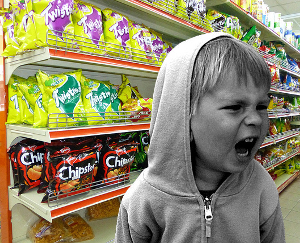Emotional eating traced to childhood
 Giving lollies to crying kids may make them emotional eaters later in life.
Giving lollies to crying kids may make them emotional eaters later in life.
A new longitudinal study from Norway has found that school-age children whose parents fed them more to soothe their negative feelings were more likely to eat emotionally later on.
The reverse was also found to be the case, with parents of children who were more easily soothed by food being more likely to feed them for emotional reasons.
“Understanding where emotional eating comes from is important because such behavior can increase the risk for being overweight and developing eating disorders,” according to the study’s lead author, Silje Steinsbekk, associate professor of psychology at the Norwegian University of Science and Technology.
“If we can find out what influences the development of emotional eating in young children, parents can be given helpful advice about how to prevent it.”
The study examined over 800 Norwegian kids over several years, checking in at ages 4, 6, 8 and 10.
Parents were asked to complete questionnaires describing their children’s emotional eating and temperament (how easily they became upset, how well they could control their emotions), as well as their own emotional feeding.
Approximately 65 per cent of the children displayed some emotional eating.
The study found that young children whose parents offered them food for comfort at ages 4 and 6 had more emotional eating at ages 8 and 10. But the reverse was also true; parents whose children were more easily comforted with food were more likely to offer them food to soothe them (i.e., to engage in emotional feeding).
Thus, emotional feeding increased emotional eating, and emotional eating increased emotional feeding. The findings held even after accounting for children’s body-mass index and initial levels of feeding and eating.
Moreover, higher levels of negative affectivity (i.e., becoming angry or upset more easily) at
age 4 increased children’s risk for emotional eating and feeding at age 6, further contributing to the cascading bidirectional relation between emotional feeding and emotional eating.
“Food may work to calm a child, but the downside is teaching children to rely on food to deal with negative emotions, which can have negative consequences in the long run,” Steinsbekk said.
It is important to note that the study was conducted in Norway, which has a relatively homogenous and well-educated population, so the findings may not map so well to diverse populations or to cultures with other feeding and eating practices.
The full study is accessible here.







 Print
Print